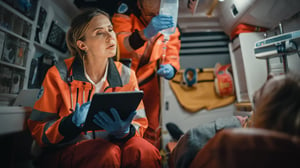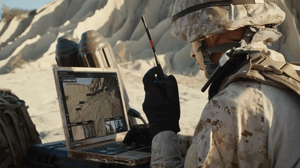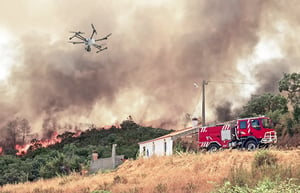What is a virtual situation room
How to make critical decisions in real-time
Bandwidth Optimization, Low-Latency Communication, Robust Security Measures
Definition
- digital platform, with no need for expensive hardware
- centralized information and communication hub, everything in One View
- real-time and virtual for easy distribution
- advanced technology

Key Features
Virtual situation rooms offer instant accessibility, integration of diverse live content sources, customizable layouts, mobile compatibility, and real-time collaboration tools. These features empower decision-makers with unparalleled situational awareness and coordination capabilities.
- Instant Access: Share a unique URL or QR code for instant entry to a One View session from any device, ensuring seamless collaboration.
- Integration of Data Sources: The platform unifies multiple streams of information into one unified interface to enhance situational awareness.
- Custom Layouts: Users can tailor the interface to prioritize relevant information for their specific roles, improving focus and efficiency.
- Real-Time Collaboration Tools: Document sharing & video conferencing facilitate seamless communication, for quick decision-making.
- Mobile Compatibility: Access via mobile devices lets you stay connected while on the move, ensuring responsiveness in dynamic situations.
Omnimedia Fusion
Technology Solutions for Crisis Scenarios
Modern virtual situation rooms employ innovative technologies to ensure reliability even in challenging environments. These include bandwidth optimization, low-latency communication through edge computing, and robust security measures to protect sensitive information.
Application
From public safety and natural disaster response to wildfire management and defense operations, virtual situation rooms prove their worth in diverse crisis scenarios. They enhance decision-making, improve resource allocation, and facilitate better inter-agency coordination.

Coordinating police, fire departments & medical services during emergencies.

Managing responses to natural disasters like earthquakes, hurricanes & floods.

Strategizing and executing military operations with real-time data.

Monitoring fire spread and deploying resources effectively.
Successful Deployments
- Platform Selection: Choosing a solution that fits organizational needs and integrates with existing systems.
- Strategic Deployment: Planning the rollout to ensure minimal disruption and maximum adoption.
- Comprehensive Training: Educating users on how to leverage the platform effectively.
- Advanced Technologies Integration: Incorporating AI and machine learning for predictive analytics and enhanced decision support.
- Artificial Intelligence (AI): A virtual situation room can trigger certain actions based on AI triggers like objects and keywords.
- Augmented Reality (AR) and Virtual Reality (VR): These technologies provide immersive visualization and environments without big screens.
- Internet of Things (IoT): Integrating data from a vast array of connected devices for richer situational data with Omnimedia Fusion.